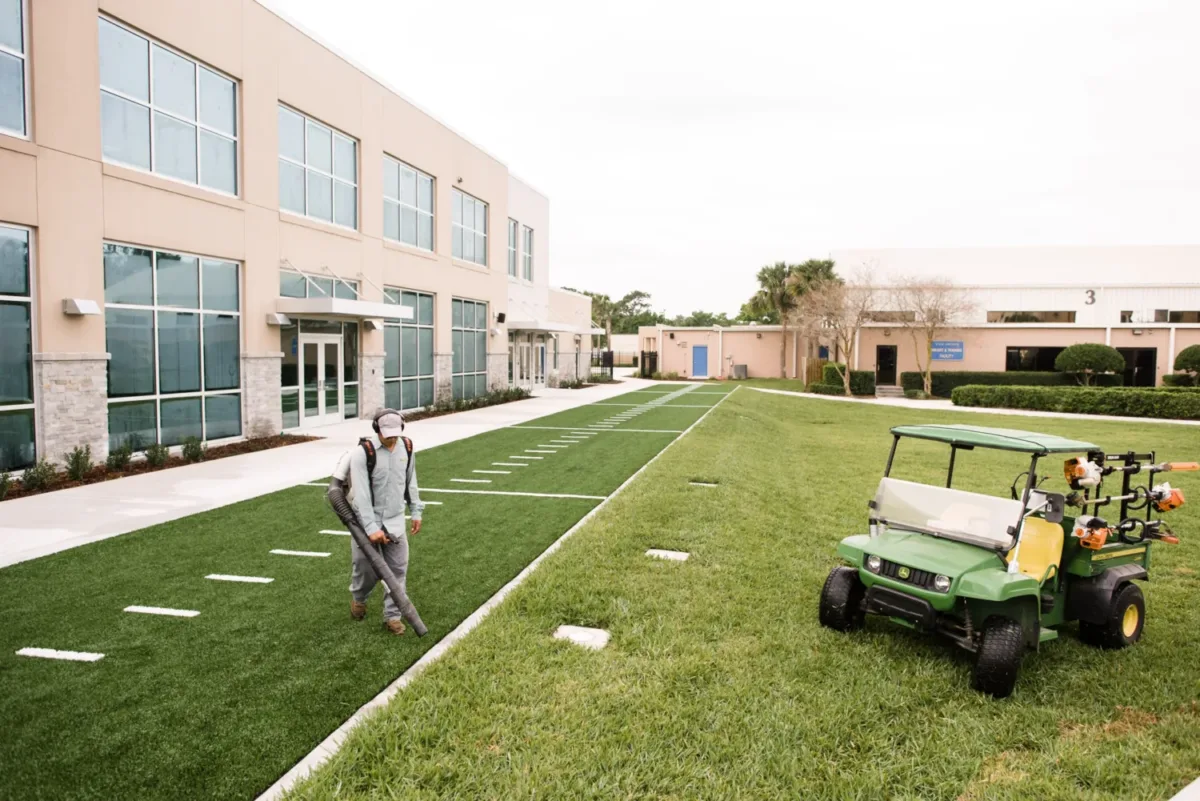Integrating Safety Moments at Work
Ensuring worker safety is essential. According to the latest data from the National Safety Council (NSC), the U.S. experienced nearly 4,700 preventable deaths in the workplace, with over 4.53 million medically consulted injuries in 2022 alone. When one false move can mean an injury or even death, workers need to be vigilant and maintain continuous focus. One effective way to remind employees about potential hazards and prevent workplace accidents is through regular safety moments. That’s why this post is centered around providing you with top safety moment topics to incorporate during your safety committee meetings.
A safety moment, also known as a safety minute, safety chat or simply a short talk, is a brief discussion and exercise held regularly to focus on a specific safety topic at hand.
These safety meetings are not just about ticking off a checklist; they’re a powerful tool to increase situational awareness, reinforce best practices and provide clear emergency response instructions.
More importantly, these moments foster a safety culture within the company, where every employee feels empowered and responsible for the safety of themselves and others. They also provide a critical opportunity for employees to ask questions, share experiences and address safety issues and concerns before proceeding.
The result? Workers at all levels benefit from a better safety culture, reduced workplace accidents, and an increased awareness of their surroundings.
But where should employers start to develop a strong safety culture?
20 Safety Moment Topics – Ideas to Elevate Your Workplace Safety Culture
Every work environment will have its own set of occupational safety risks, so it’s important to tailor your safety talks and exercises to the potential hazards specific to your facility — whether that be distracted driving or machine safety.
To help give you some inspiration, here are 20 safety moment topics to cultivate awareness in your workplace:
1. Understanding the Different Types of PPE
Personal protective equipment (PPE) is essential for safeguarding workers against various workplace hazards. This safety moment can cover different types of PPE, as well as how and when to use them, or it might go over PPE Standards from the Occupational Safety and Health Administration (OSHA). The idea is to provide employees with clear direction on choosing the right kind of PPE for each task.
2. Rendering First Aid Basics
First aid knowledge is crucial for providing immediate assistance in the case of a workplace injury. This safety training exercise can include basic first aid procedures, such as CPR, wound care and how to handle burns. By incorporating hands-on activities, you can ensure all workers walk away from the safety meeting with both the knowledge and muscle memory to help their colleagues in an accident.
3. How to Use a Fire Extinguisher
Knowing how to use a fire extinguisher is part of fire safety 101. All employees should understand the different types of fire extinguishers, their appropriate applications and how to use them. For this safety moment, you can demonstrate the PASS method (pull, aim, squeeze and sweep) of extinguishing a fire.
4. Emergency Preparedness
Emergencies don’t wait on your schedule. Having a plan in place is essential to minimize the impact of an unexpected incident. Run through your emergency response plan with your team, including evacuation routes, emergency contacts and communication protocols, so everyone knows how to stay safe and mitigate disaster as it unfolds.
5. Recognizing and Reporting Potential Hazards
While you can’t plan for workplace accidents, you can prevent them. But that all starts with employees on the ground identifying and addressing potential hazards before they cause harm. Have a safety chat to cover common hazards, how to recognize them and the proper channels for reporting them. Open communication and awareness are key for reducing accidents.
6. Chemical Spill Response
Chemical spills can pose a serious risk to employee well-being. Your chemical safety moments should walk employees through the immediate steps to take when a spill occurs, from evacuating the area and using the appropriate PPE to locating and using the nearest spill kit for a swift and safe cleanup.
7. Safe Handling of Hazardous Materials
OSHA has strict safety protocols in place around chemical safety and hazardous material handling, storage, transportation and disposal. Discuss proper techniques for each step with your employees to minimize the risk of exposure to these substances.
8. Electrical Safety Basics
Does your workplace have loose cables or damaged electrical equipment? Electrical safety is crucial for preventing fires, shocks, burns and other injuries. Use a safety minute to have employees check all of their equipment to make sure it’s properly maintained. That means no circuits are overloaded, all outlets are grounded, and cords are properly insulated, secured and organized neatly.
9. Preventing Slips, Trips and Falls
Slips, trips and falls are some of the most common workplace injuries, with serious consequences for employees. Emphasize the importance of maintaining a clean and organized work environment. In addition to promptly cleaning spills, reminding employees to wear proper footwear can also prevent slips.
10. Ladder Safety Techniques
Ladder safety is so important that we’ve dedicated a whole month to it! But even outside of May, it’s essential to have ladder safety training so employees know the right ladder to choose for a task, how to inspect it before use, as well as how to set it up on stable ground.
11. The Importance of Hearing Protection
Over half (53%) of workers exposed to high levels of noise report they don’t wear hearing protection, per the CDC. This kind of PPE is vital in preventing long-term hearing damage. During this safety moment, discuss and supply employees with the different types of hearing protection available, such as earplugs and earmuffs, and their proper usage.
12. How and When to Use Respirators
Respirators are critical pieces of equipment that protect workers from inhaling hazardous substances and other airborne contaminants like mold or even viruses. Take a moment to have employees perform a proper fit test, whether with an N95 mask, a half-face respirator or a full-face breathing apparatus.
13. Heavy Lifting Tips
Improper lifting can cause severe back injuries and musculoskeletal disorders. Use this training exercise to demonstrate safe lifting techniques, such as bending at the knees, keeping the load close to the body and avoiding twisting motions. For heavier loads, have employees partner up to practice using moving straps.
14. Avoiding Repetitive Strain
Even with the right techniques and equipment, employees can still receive a repetitive strain injury (RSI) — caused by performing the same motions repeatedly over time. To prevent RSIs, encourage employees to take regular breaks, use ergonomic tools and perform stretching exercises periodically. These preventive measures can mitigate long-term injuries and help employees stay limber and healthy.
15. Staying Hydrated
Whether employees are exerting themselves or not, dehydration is always a risk. Even as little as 2% under the recommended amount per day can cause fatigue, confusion, memory loss and more, according to Harvard. Emphasize the importance of keeping a bottle handy and drinking water regularly throughout the day, especially for those performing strenuous labor or who work in hot environments.
16. Dealing with Hot and Cold Conditions
Speaking of hot environments, extreme temperatures can pose significant risks to worker safety. In addition to dehydration, employees run the risk of heat stroke or, conversely, hypothermia. For hot conditions, discuss the importance of wearing lightweight clothing and taking regular breaks in cool, shaded areas. In cold environments, it’s important to dress in layers — with special protection for extremities like gloves — and recognize the signs of frostbite or hypothermia.
17. Distracted Driving Prevention
Distracted drivers are responsible for 13% of all motor vehicle accidents in the U.S. Promote attentive driving practices by discussing the dangers of using mobile phones, eating or engaging in other distractions while on the road. You can also encourage employees to use hands-free communication when necessary and to pull over safely if they need to attend to an urgent matter.
18. How to Safely Operate Machinery
Like many of these safety moments, OSHA has strict guidance when it comes to machine safety. Review their standards and hazard recognition tips with employees, and follow their recommendations on regular equipment inspections, in addition to those of the manufacturer. By addressing the common safety hazards associated with machinery, such as entanglement, pinch points and electrical risks, you can increase situational awareness and significantly reduce the risk of workplace accidents.
19. Stress Management Techniques
Workplace stress can have a negative impact on an employee’s overall well-being, leading to decreased productivity and engagement and an increased risk of accidents. Highlighting effective stress management techniques, such as deep breathing exercises, time management strategies and regular breaks, can greatly contribute to employee wellness — but we’ve got a whole separate list of tips for that.
20. Mental Health and Safety
Zooming out, mental health is an integral part of workplace safety. Host a mental health safety talk to highlight signs of issues, such as anxiety and depression, and most importantly how teams can support each other. These safety moments are essential for creating a stigma-free environment where employees feel comfortable seeking help.
By prioritizing all aspects of worker safety, you can foster a safer, more supportive workplace culture that benefits everyone.
Learn From the Safety Experts
Looking for more safety moment topics, tips and information to share during your next safety moment? Watch our short talks, videos and webcasts to expand your knowledge.
For more insight, ask a safety question and receive an answer from one of our experts.






























